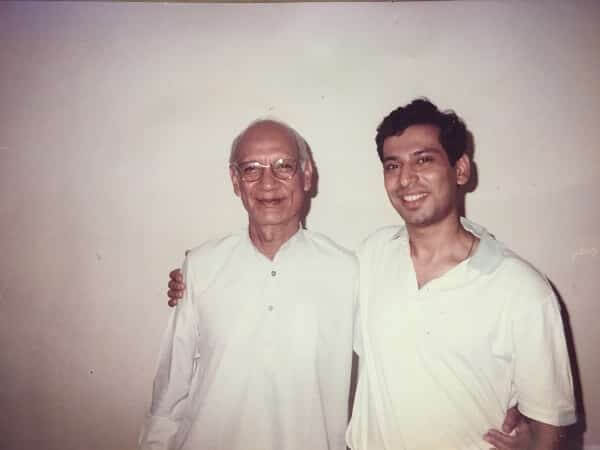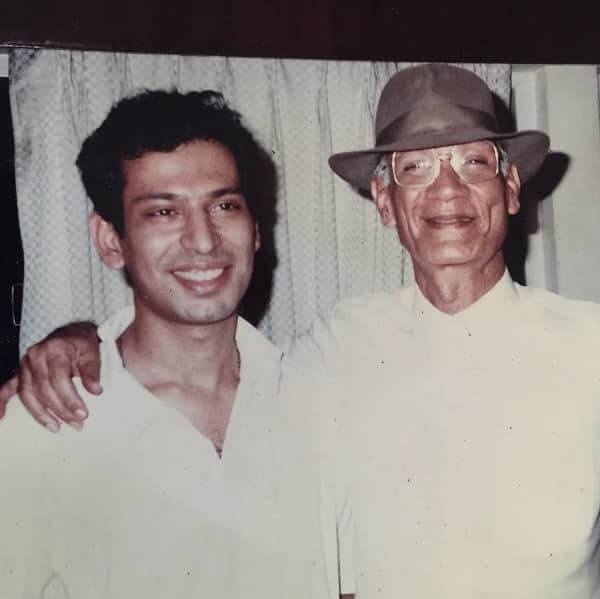I am an ardent admirer of O P Nayyar’s music. Anyone who knows me well, knows of my love for Indian film music from the 1940s to the 1970s. I have grown up listening to, and thoroughly enjoying, songs by composers ranging from Pankaj Mallick and R C Boral through to R D Burman.
But if I must pick a personal favourite among these it would have to be Nayyar.
I have often wondered to myself why it is that I like Nayyar’s music so much, and what it is in his songs that makes for such pleasurable listening. What is it that sets it apart from the others?
Early exposure
I was introduced to Nayyar’s music in my early teens by my brother, Tushar Bhatia (Music Director, Andaz Apna Apna). The radio was playing Ek pardesi mera dil le gaya from the film Phagun.
“You have to listen to this,” he said, and went on to point out how the song begins on a single beat for the first line and then doubles up for the next Jate jate meetha meetha gham de gaya.
“Notice the word repetition – jate jate and meetha meetha”, he said, “isn’t it wonderful?”
That was it. I was mesmerised by the song and found myself instinctively tapping my feet.
And from that point on began my journey of ‘discovering’ O P Nayyar.
Collecting OP
The discovery of each previously unheard O P song was like uncovering treasure and through my school and university days I spent hours searching for these songs to add to my collection. Radio Vividh Bharti and Radio Ceylon were the obvious sources and I would sit patiently with my cassette recorder waiting for the announcer to utter the words “music direction O P Nayyar” before I pressed the REC button.
I recall going to Rhythm House, an iconic music store in Mumbai, with Tusharbhai just to be able to listen to the songs from the film Aar Paar. Rhythm House had listening booths where you could sit down and listen to LPs before you bought them. ‘Try before you buy’ as the saying goes, except we never bought. We could not afford the pricey sum of Rs 30 for the LP back then. We were simply there to hear the songs – Babuji dhire chalna, Sun sun sun sun zalima and Hoon abhi maijawan would run shivers down my spine. They still do.
Chor Bazar in Mumbai is a large flea market with dozens of stores selling second-hand goods. I remember finding an EMI Pakistan release LP of Yeh Raat Phir na Aayegi which I ended up purchasing for Rs 100. That was later in my uni days and while Rs 100 was still a large sum, I could now afford an occasional splurge. The record was out of issue in India and buying this rare copy was most certainly worth it.
Chor Bazar became a regular haunt where I painstakingly went through piles of dusty 78rpm records in the hope of finding a Nayyar song. I discovered rare songs like Chaya hai sama mera dil hai jawan (Qaidi); Man more gaa jhoom ke (Mangu) and Aha ha ha jawani jhoomti hai (Bade Sarkar).
A cassette with all Howrah Bridge songs and one with a highly echoey recording of Mangu and Musafirkhana songs were exciting finds.
Smuggling my cassette recorder into matinee shows of Hum Sub Chor Hain, and Pran Jaye par vachan na jaye to tape the songs, and recording off Chayageet on Doordarshan resulted in me augmenting my collection.
So much more adventurous and thrilling to discover and collect this way rather than downloading off YouTube!

Meeting the man himself
I had the opportunity to meet O P Nayyar several times thanks to a friend Arshad Sultan. Arshadsaab was the representative of Pakistan Airways based in Mumbai and Nayyar, being a close friend, frequently visited him in his Cuffe Parade apartment.
Arshadsaab organised several mehfils attended by fans and we would spend hours singing and listening to stories about Nayyar’s music career. These are occasions I will never forget and be eternally grateful for.
The man, the music
I can broadly categorise Nayyar’s music career into three eras. The first in the ‘50s where he predominantly used Mohammed Rafi, Shamshad Begum and Geeta Dutt as singers – Aye dil aye deewane (Baaz), Yeh lo mai hari piya (Aar Paar), Thandi hawa kali ghata and Jaane kahan mera jigar (Mr and Mrs 55), Boojh mera kya naam (CID), Badi rangeeli zindagi (Shrimati 420), Tum jo hue mere humsafar (12 O’clock).
I’m still blown away by Thoda sa dil laga ke dekh (Musafirkhana) where Nayyar had Shamshad sing the words with Rafi singing the interlude music throughout.
Then came the era where Asha Bhosle became his prime singer. The sophistication in his orchestration and his use of musicians like Rais Khan (sitar), Shivkumar Sharma (santoor), Zarin Daruwala (sarod) and Ram Narain (sarangi) added a diamond like lustre to his songs. Romantic musicals like Mere Sanam, Sawan ki Ghata, Kashmir Ki Kali, Yeh Raat Phir Na Aayegi, Humsaya, Ek Musafir Ek Haseena gave us songs like Jaiye aap kahan jayenge, Pukarta chalahoon mai, Zara haule haule chalo, Phir miloge kabhi, Dil ki awaz bhi sun and Bahut shukriya.
Sambandh was a turning point once again. With serious, meaningful songs like Andhere me jo baithe hain, Tumko to karodo saal and Akeli hoon mai piya, Nayyar showed us a side rarely seen in his previous work.
OP fan forever
Coming back to the question of WHY I like Nayyar’s music as much as I do, I can only conclude that I don’t really need to understand why I like it so much, it touches the heart and that is enough.
Meri nazaren haseen hai ke tum ho haseen,
yeh samajhne ki mujhko zoorurat nahin,
baat nazaron ki hai baat kuch bhi nahin
jisko dil chhahe duniya me hai who haseen.
READ ALSO: 5 best songs by the talented A R Rahman




